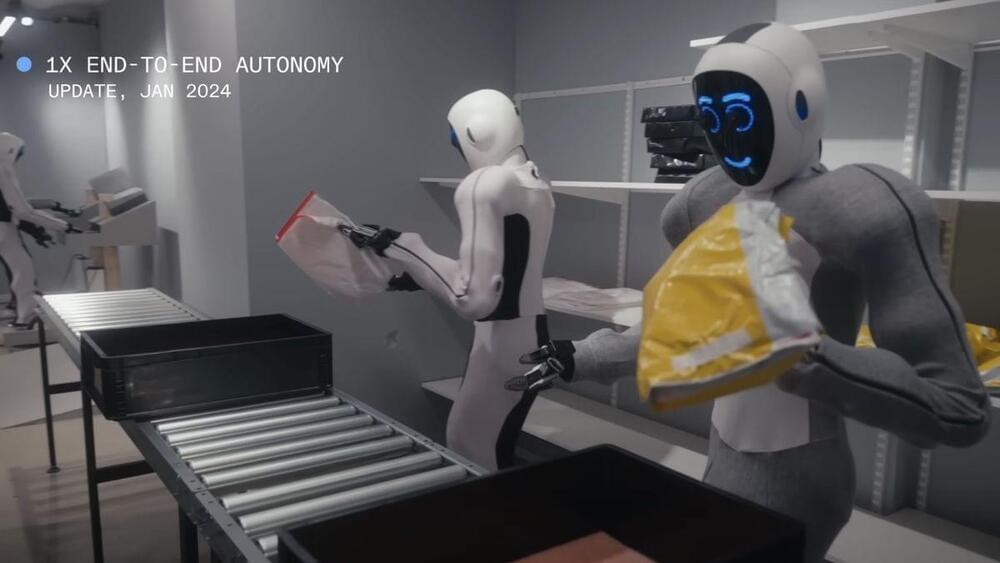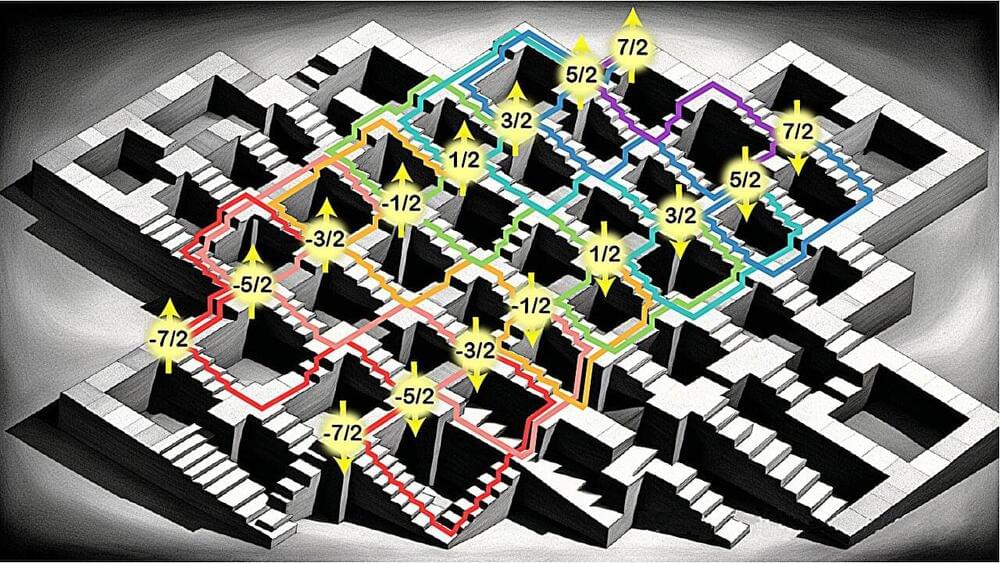In a new video, 1X’s EVE robots work together in silence in a test environment, performing actions such as sorting mail, handling objects and tidying up a child’s toys.



Quantum computing engineers at UNSW Sydney have shown they can encode quantum information—the special data in a quantum computer—in four unique ways within a single atom, inside a silicon chip.
The feat could alleviate some of the challenges in operating tens of millions of quantum computing units in just a few square millimeters of a silicon quantum computer chip.
In a paper published in Nature Communications, the engineers describe how they used the 16 quantum ‘states’ of an antimony atom to encode quantum information.

CERN has announced that they are to release a cut-down version of their popular Hadron Collider for use in the home.
The Large Hadron Collider was built over twenty years ago, is housed in a 27-kilometre tunnel on the Switzerland – France border, and is used to smash particles together to see what happens.
The facility has proven tremendously successful, having smashed over thirty particles together since it was built.

A critical security flaw in the Bricks theme for WordPress is being actively exploited by threat actors to run arbitrary PHP code on susceptible installations.
The flaw, tracked as CVE-2024–25600 (CVSS score: 9.8), enables unauthenticated attackers to achieve remote code execution. It impacts all versions of the Bricks up to and including 1.9.6.
It has been addressed by the theme developers in version 1.9.6.1 released on February 13, 2024, merely days after WordPress security provider Snicco reported the flaw on February 10.

The Anatsa banking trojan has been targeting users in Europe by infecting Android devices through malware droppers hosted on Google Play.
Over the past four months, security researchers noticed five campaigns tailored to deliver the malware to users in the UK, Germany, Spain, Slovakia, Slovenia, and the Czech Republic.
Researchers at fraud detection company ThreatFabric noticed an increase of Anatsa activity since November, with at least 150,000 infections.

The Cactus ransomware gang claims they stole 1.5TB of data from Schneider Electric after breaching the company’s network last month.
25MB of allegedly stolen were also leaked on the operation’s dark web leak site today as proof of the threat actor’s claims, together with snapshots showing several American citizens’ passports and non-disclosure agreement document scans.
As BleepingComputer first reported, the ransomware group gained access to the energy management and automation giant’s Sustainability Business division on January 17th.


Ever wonder what it’s like to live on Mars? Now, you could try out life on the Red Planet – in a simulation run by NASA. The space agency is looking for participants to live on a fake Mars for a full year to help them prepare for human exploration of the planet.
This is the second of three missions, which will have four volunteers living in a 1,700-square-foot Mars simulation, NASA has announced. The missions, called CHAPEA, for Crew Health and Performance Exploration Analog, take place in a 3D-printed Mars habitat at NASA’s Johnson Space Center in Houston, Texas.
The simulation, called the Mars Dune Alpha, simulates a future Mars habitat with separate areas for living and working. It includes four living quarters for each volunteer, a workspace, a medical station, lounge areas and a galley and food growing stations.

NEJM Journal Watch Oncology and Hematology Associate Editor David Ilson was on hand at the 2024 ASCO Gastrointestinal Cancers Symposium and highlights the latest research in colorectal, neuroendocrine, and esophagogastric cancers.
Important new studies with the potential to impact clinical practice were presented at the 2024 ASCO Gastrointestinal Cancers Symposium held January 18 to 20 in San Francisco. NEJM Journal Watch Oncology and Hematology Associate Editor David H. Ilson, MD, PhD, was on hand and reports on some of them.
COLORECTAL CANCER
Researchers presented results from CheckMate 8HW, an industry-sponsored, international, open-label, phase 3 trial evaluating first-line treatments in patients with microsatellite instability (MSI)-high/DNA mismatch repair protein-deficient metastatic colorectal cancer. Patients were randomized to investigator’s choice of chemotherapy (mFOLFOX6 or FOLFIRI, with or without bevacizumab or cetuximab), single-agent nivolumab (240 mg every 4 weeks followed by 480 mg monthly), or nivolumab combined with ipilimumab (1 mg/kg for 4 doses). An interim analysis was presented for the 303 patients treated with chemotherapy or ipilimumab/nivolumab.
Lung cancer is the deadliest of cancers. Screening could save thousands of lives, so why is it not the norm?
Lung cancer kills more people than any other form of tumour.
About nine out of ten people die within five years of being diagnosed with the disease. If the cancer is caught very early most patients could be cured. But doctors struggle to diagnose early because there are no symptoms until the cancer is in its late stages and has spread to other organs.
Some experts think that doctors should screen people at high risk to find lung cancer before symptoms appear. The national lung-screening trial in America subjected 53,000 current and former heavy smokers to either X-ray or computed-tomography scans every year for three years. Its results, reported in 2011 found that screening with CT scans did save lives.
But there was a problem. Too many of the lumps found during the screening were not cancer. This is known as a false positive. False positives can harm patients who undergo dangerous follow-up procedures such as biopsies, even if they do not have cancer.
It can also affect their mental health and false positives add to the cost of health care. According to new data from the World Health Organisation these harms can be greatly reduced by following a different protocol. Instead of treating all lumps as a positive result doctors are now advised to ignore the smallest nodules and treat them as a negative result. This has halved the rate of false positives.